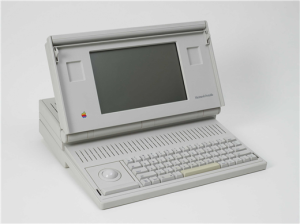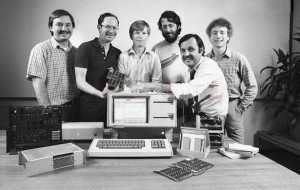Computers
The Original iMac Goes on Sale
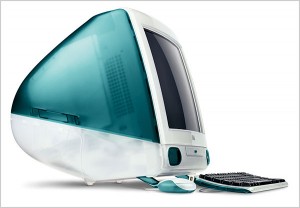
After three months of anticipation, the original iMac G3 goes on sale. The “Bondi Blue” iMac became well-known for its colorful case, which bucked the industry norm beige. However, it is also known for being the first commercially successful computer to eliminate the use of legacy ports and the floppy drive. Widely criticized at the time for not including the older technologies, by only featuring USB ports for peripheral connectivity, the iMac helped popularize the emerging standard, even on Windows PCs. And when was the last time anyone saw a beige PC?
I recall helping my uncle purchase one of the first iMacs at a CompUSA store on that first day. There were only 15 available and we were there early enough to grab one before they quickly sold out. Yes, I was totally jealous, but at least I got to help set it up 🙂
Dell Laptops Catch Fire!
Dell and Sony admit that flaws in Sony-manufactured batteries used in certain Dell laptops could result in the batteries overheating, catching fire, or exploding. This came after several widely publicized reports in the preceding months where Dell laptops did catch fire. They issue a recall of 4.1 million batteries, the largest safety recall in the history of the consumer electronics industry, still to this day. Even Samsung’s famous Galaxy Note 7 recall in 2016 only affected 2.5 million units. Dell’s reputation suffered for many years and to some, has never fully recovered from the incident.
The IBM PC Introduced
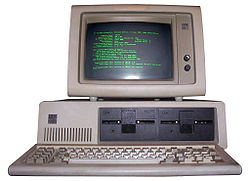
IBM introduces its first personal computer, the IBM PC Model 5150. IBM originally intended this model to be a stop-gap computer that would allow them to quickly tap into the emerging personal computer market while taking the time to develop a “real” PC. It was developed in under a year by a team of 12 with the goal of rapid release to market. Therefore, this team was allowed to work outside of the normal IBM development process and use whatever “off-the-shelf” components allowed for the quickest development. This overriding goal of developing something as quickly as possible had monumental unintended consequences for IBM and the computer industry as a whole that are still being felt to this day.
By compromising quality for rapidity, the design of the IBM PC forced software programmers to resort to inelegant methods of software development, hindering the reliability and compatibility of their software. This laid the groundwork for the reputation of the PC as error-prone and frustrating to use. The use of common components and the choice of Microsoft’s DOS as the PC’s operating system allowed other companies to quickly clone the IBM PC. They also allowed Microsoft to license their DOS to other companies, giving Microsoft control of the operating system market. Ultimately these choices lead to IBM’s loss of control of the platform. IBM never did really get a chance to create their “real” PC. And because IBM was the 800-pound gorilla of the business world at the time, the computer that was supposed to be a stop-gap became the overwhelming computing standard, crushing nearly every other emerging platform in the process.
Steve Jobs was quoted in a 1985 interview, “If … IBM wins, my personal feeling is that we are going to enter sort of a computer Dark Ages for about 20 years.” While IBM themselves didn’t win, the creation that they lost control of was the clear market winner for approximately the next 20 years. Many will argue that time was in fact a Dark Age for the home computer, but no one could have predicted that on this day in 1981.
The First E-mail From Space
Astronauts aboard the Space Shuttle Atlantis, mission STS-43, use an Apple Macintosh Portable computer to send what is considered the first e-mail from space. Using the AppleLink online service, Atlantis astronauts Shannon Lucid and James C. Adamson sent the following message:
Hello Earth! Greetings from the STS-43 Crew. This is the first AppleLink from space. Having a GREAT time, wish you were here,…send cryo and RCS! Hasta la vista, baby,…we’ll be back!
The AppleLink software on the Macintosh was specially configured to connect to NASA’s communication system which allowed the Shuttle to interface with Apple’s proprietary network from space. The Macintosh Portable itself only had very minor modifications to operate in space.
Project Chess Gets Approval

The Project Chess team at IBM shows a prototype microcomputer to their corporate management. Management gives approval for the team to build an operational computer within a one year deadline to compete in the rapidly emerging personal computer market. One year and 4 days later, the IBM PC is introduced to the world and the rest is history.
IBM Presents Harvard the Mark I
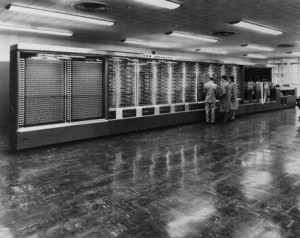
IBM presents Harvard University their Automatic Sequence Controlled Calculator (ASCC), an electro-mechanical computer devised by Howard H. Aiken and built by IBM. Harvard renamed the ASCC the Harvard Mark I. The Mark I was not significant for technological advances, as the fully-electronic ENIAC was being constructed when the Mark I was being put into service. However, the Mark I was the first large-scale digital calculator ever built and served to spark the desire for more and better computing machines.
Radio Shack Introduces TRS-80
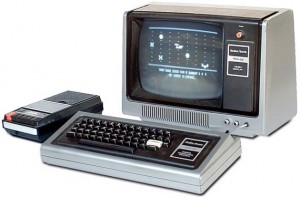
Radio Shack introduces their first computer, the TRS-80. With the support of 3500 Radio Shack stores plus a relatively low cost, the TRS-80 helped drive the acceptance of the personal computer in the home. Originally forecasting sales of just 3,000 to 5,000 per year, the TRS-80 sold over 10,000 units in the first month-and-a-half of sales and 200,000 over the lifetime of the product.
Apple Lisa is Born
July 30, 1979
Apple begins work on the Lisa, which would become the world’s first commercial computer with a graphical user interface. Originally intended to sell for $2,000 and ship in 1981, the Lisa is delayed until 1983 and sells for $10,000. Utilizing technology that is ahead of its time, the high cost, relative lack of software, and some hardware reliability issues ultimately sink the success of the Lisa. However, much of the technology introduced by the Lisa influenced the development of the Macintosh as well as other future computer and operating system designs.
IBM’s First Desktop Computer
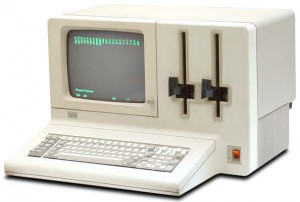
IBM introduces their System/23 Datamaster desktop computer, only two weeks before they introduce their IBM PC. Geared towards small business for use as a word processor and data processor, the computer was designed to be set up by end-users without the need of a computer specialist. While now a footnote in history, the importance of the Datamaster is that many of the team members that developed it were re-assigned to the secret IBM PC project. Much of the knowledge they acquired working on the Datamaster went into developing the IBM PC as quickly as possible. For example, the choice of the Intel 8088 processor in the IBM PC was based on the team’s familiarity with the similar Intel 8085 processor used in the Datamaster.
Commodore Amiga Introduced
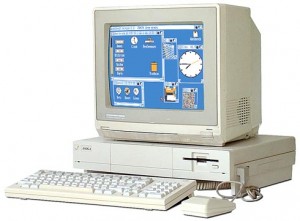
Commodore introduces its Amiga personal computer, also known as the Amiga 1000 or A1000. Featuring a multitasking, windowed operating system, color graphics, and stereo sound among other features ahead of its time, the Amiga developed a loyal user following that remained strong even as the PC market became increasingly consolidated between the dominant IBM-compatible PCs and Apple Macintosh computers.
In 1994, Byte Magazine would write, “The Amiga was so far ahead of its time that almost nobody — including Commodore’s marketing department — could fully articulate what it was all about. Today, it’s obvious the Amiga was the first multimedia computer, but in those days it was derided as a game machine because few people grasped the importance of advanced graphics, sound, and video.”


